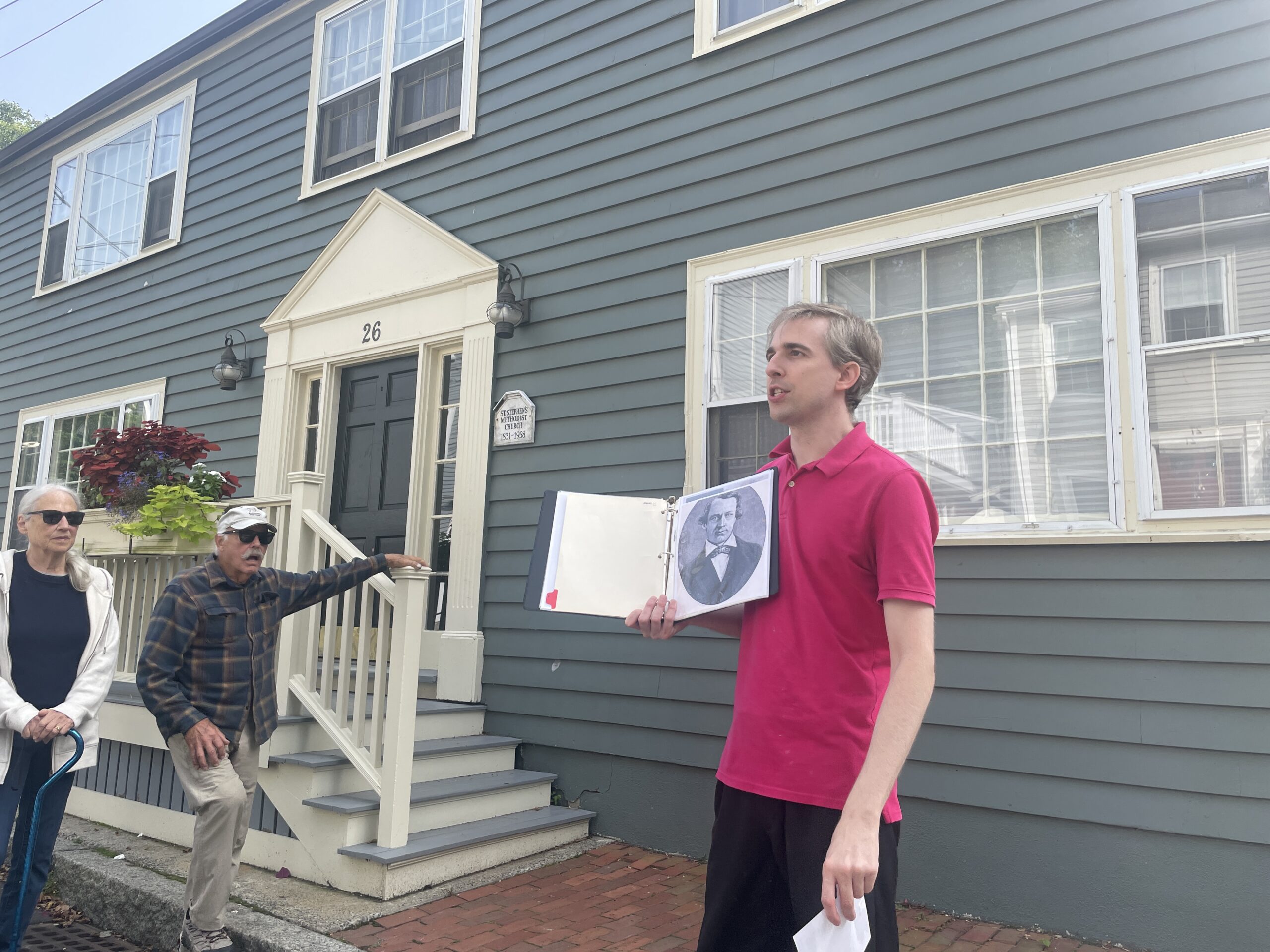A total of 56 residents gathered at Abbot Hall on Sunday to take part in the Marblehead Museum’s Slavery to Freedom Walking Tour. The two tours took place at 10 a.m. and 1 p.m., respectively. Both were led by the museum’s Associate Director of Programs and Operations Jarrett Zeman, who took the groups through sites that have 18th and 19th century ties to slavery and the fight to abolish it.
He explained that one of the main themes of the event was that of historical agency and how the oppressed contributed heavily to their own eventual freedom.
“On the tour we talk about how the enslaved people of Marblehead are not just this group of people who are passively accepting their fate as someone else’s property,” Zeman explained.
The tour featured examples of slave resistance, slaves who escaped, and the tight-knit communities that they formed.
A noteworthy 18th century site included in the tour was Jeremiah Lee’s brick kitchen and slave quarters. One of the wealthiest colonial merchants in Marblehead, Lee owned at least three slaves. Their names were Diamond, Cupid, and Jemmy.
“They may have worked and lived inside that brick building,” Zeman said. “Those were definitely not their birth names.”
He added that some slaves were named after famous, powerful world figures as a form of irony and mockery.
Another site featured was the Azor Orne house on Orne Street, which has direct ties to the Underground Railroad. Dr. Samuel Young was an abolitionist who owned the property at the time. Young housed escaped slaves as they made their way through the Underground Railroad.
“One of Samuel Young’s associates here in Marblehead by the name of Simeon Dodge transported this self-emancipated slave in a wagon to a shoemaker in Salem,” Zeman said, “who then sent the former slave onto the next stop of the local Underground Railroad until he safely made his way to Nova Scotia.”
Another emancipation location featured was the Lyceum, a combination museum and theater that is best known for Frederick Douglass’ 1844 speech about his escape from slavery.
“It was so compelling that Marbleheaders were still writing about it 50 years later,” Zeman said.
Zeman explained what gave him and his fellow historians at the museum the idea to put this tour together.
“A lot of history is really about telling stories that haven’t been told before,” Zeman said. “Especially about people who are historically on the margins of society like enslaved people… our job is really to piece together details of those stories so that we can give Marblehead’s enslaved population the dignity and respect that they deserve.”

